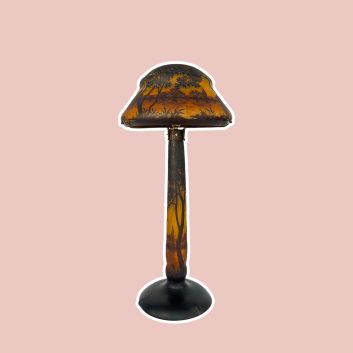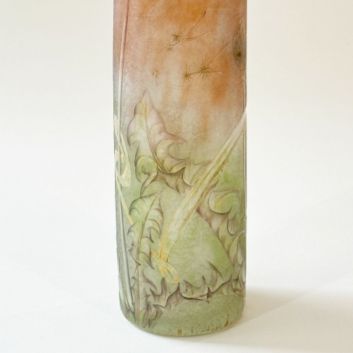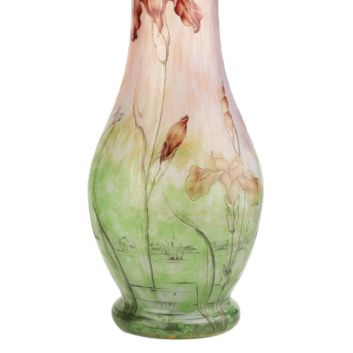Rating and value of Daum crystal works, Nancy school
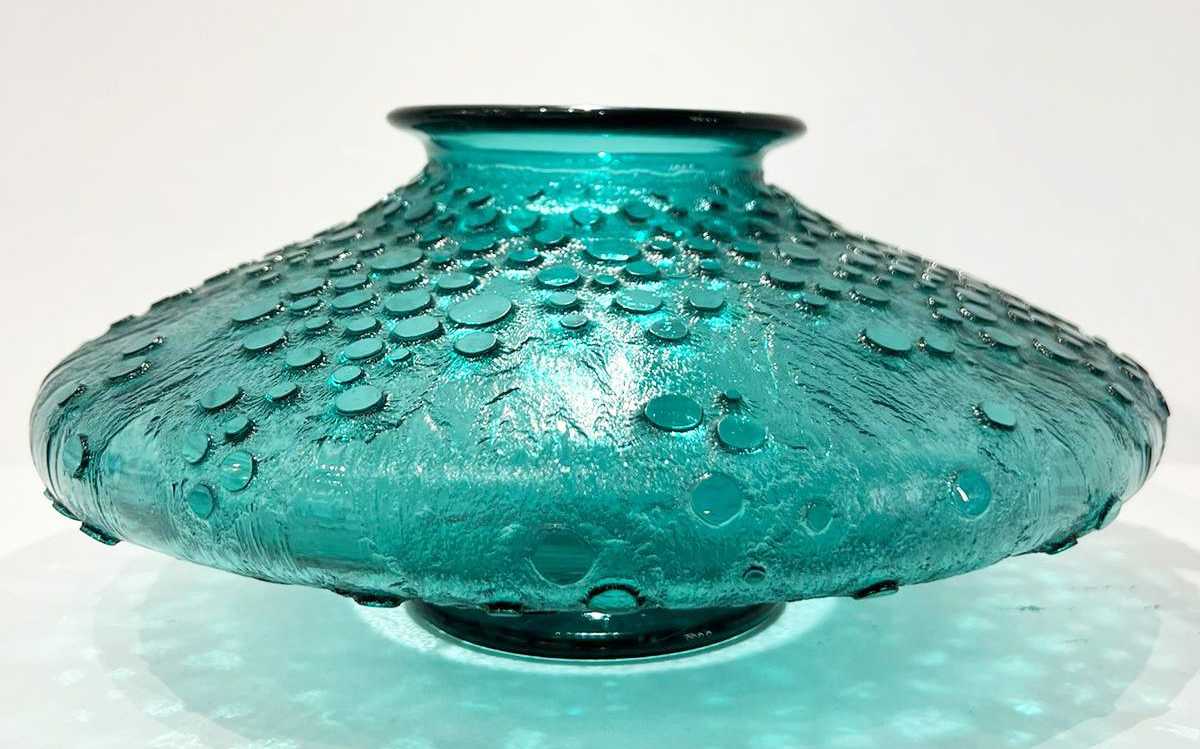
If you own a crystal object made by the Daum glassworks or after, and would like to know its value, our state-approved experts and auctioneers will offer you their appraisal services.
Our specialists will carry out a free appraisal of your work, and provide you with a precise estimate of its current market value.
Then, if you want to sell your work, we'll point you in the right direction to get the best possible price for it.
Rating and value of Daum crystal works
Daum is a French glassmaker well known to crystal enthusiasts. If you own one, it may be worth more than you think. On the art market, Daum crystal can fetch very high prices under the auctioneer's hammer.
Their animal-themed crystal works are particularly sought-after, and the price at which they sell on the art market ranges from €50 to €80,800, a fairly substantial range, but one that says a lot about the value that can be attributed to Daum crystals.
In 2022, François-Xavier Lalanne's 1978 crystal and gilded bronze sculpture Oiseau de Daum sold for €38,000, whereas it was estimated at €10,000-15,000, more than twice the high estimate.
Order of value from a simple work to the most prestigious
Type of crystal object | Results |
|---|---|
Sculpture (flowers, animals...) | From €50 to €57,000 |
Crystal vase | From €70 to €80,800 |
Chandelier - suspension | From €450 to €29,500 |
Response in less than 24h
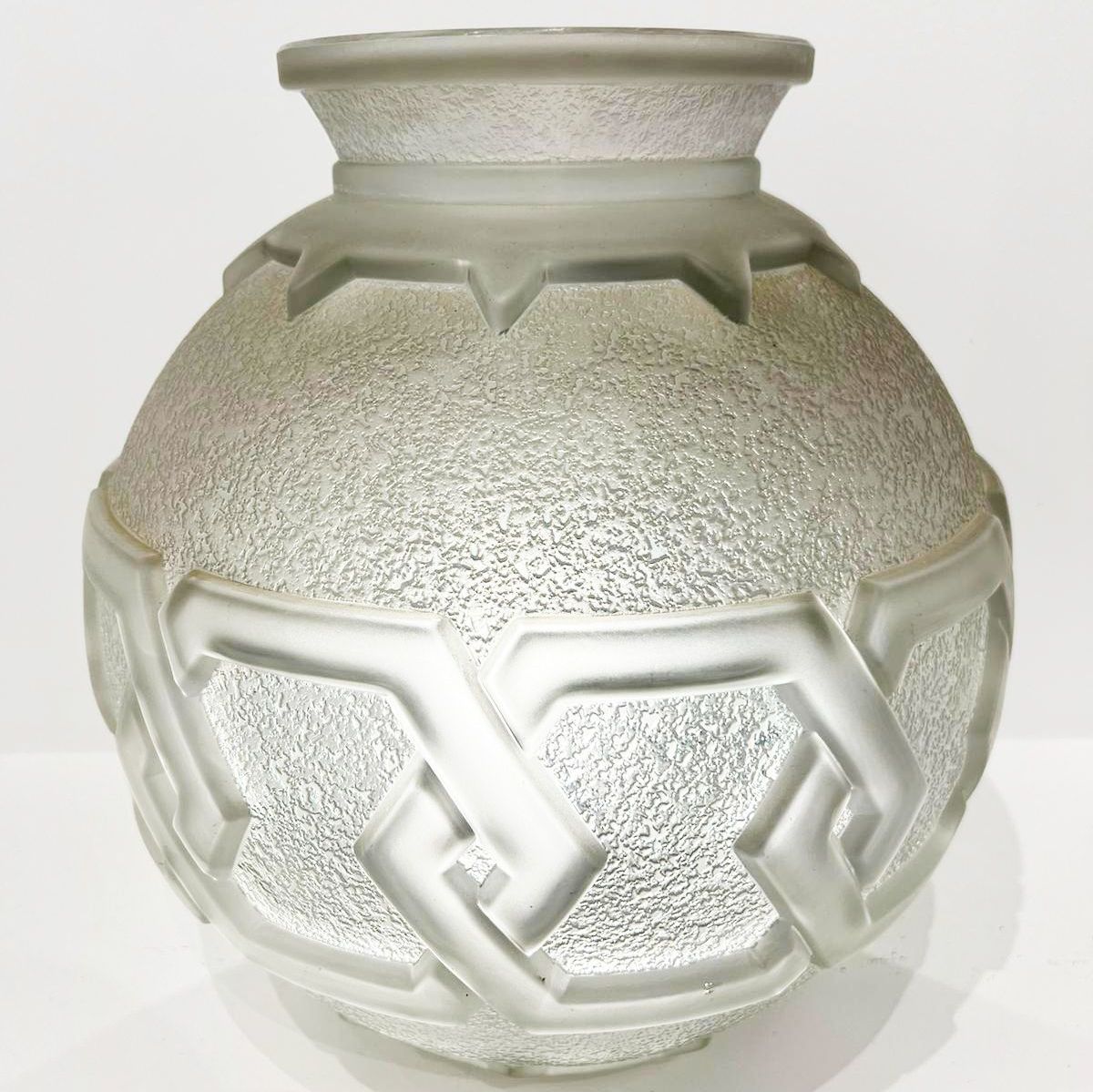
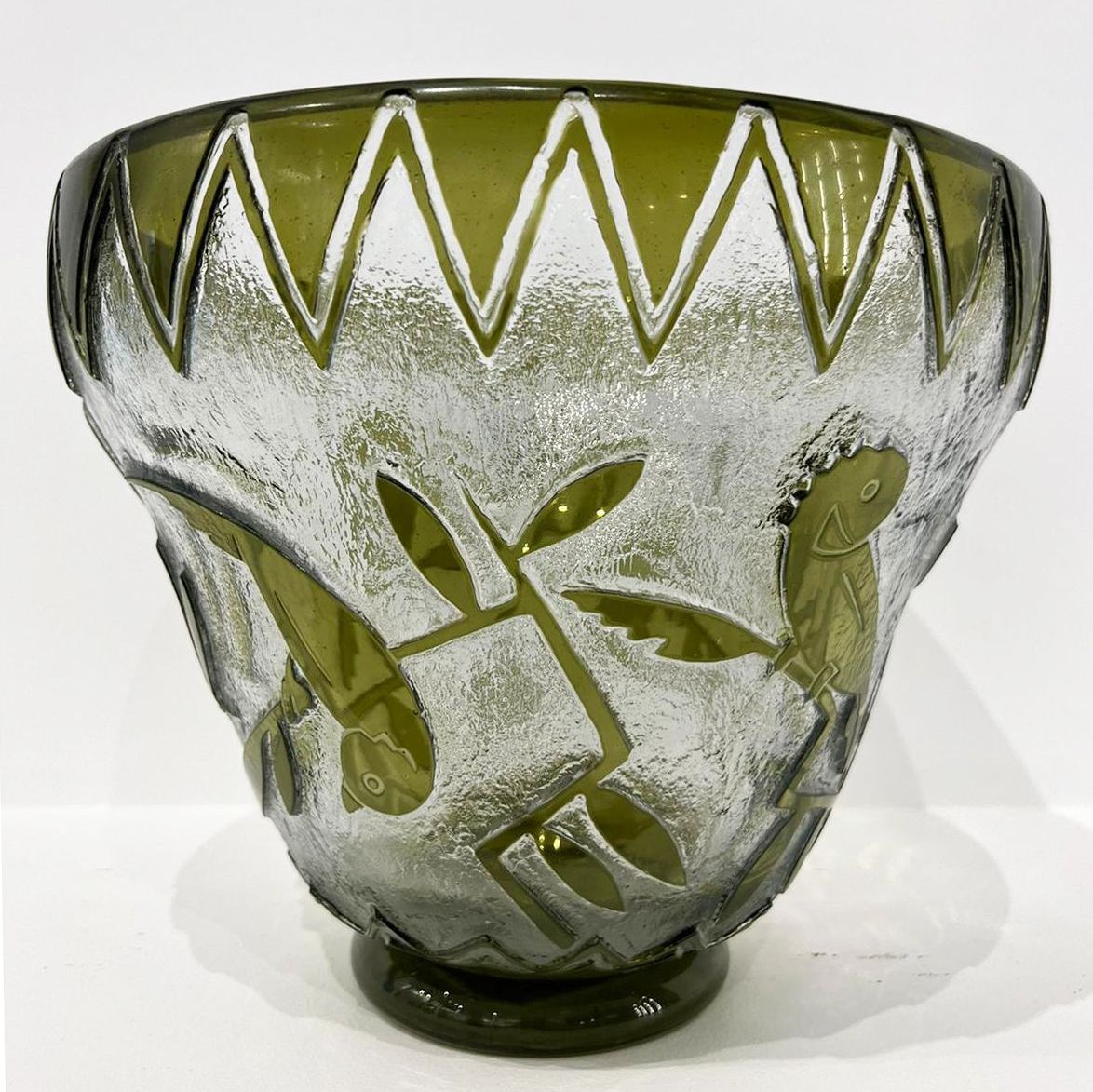
Style and technique of Daum glassmaking
Daum's style is distinguished by a bold fusion of complex techniques and a relentless pursuit of artistic perfection.
From the outset, the glassworks innovated with refined processes such as multi-layered glass, where each layer of glass is patiently superimposed and etched to reveal patterns in deep, nuanced hues.
This meticulous work, combined with acid decoration, gives the pieces a unique texture and relief, capable of capturing the light and transforming the objects into veritable works of art.
Wheel engraving, practiced by highly skilled craftsmen, allows for unparalleled finesse in detail, giving creations a living, almost sculptural character.
Daum also draws its inspiration from nature, taking the shapes of flowers, leaves and landscapes and sublimating them in elegant, dreamlike compositions.
By inviting artists such as Jacques Grüber and Henri Bergé, Daum closely combined art and technique, creating a style that was both timeless and deeply rooted in Art Nouveau.
This singular signature makes Daum glassware a symbol of French creativity and expertise.
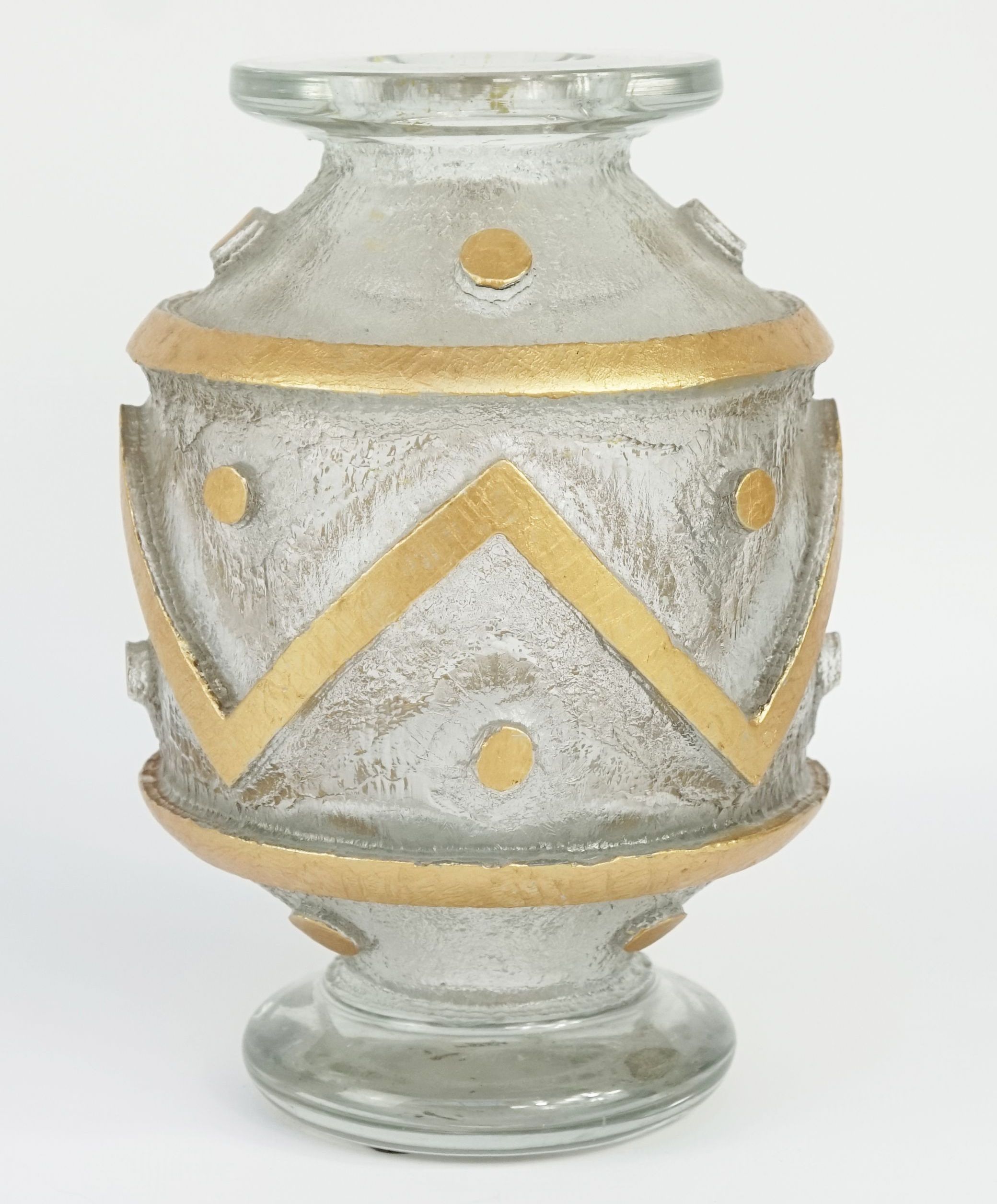
Daum glassworks: a history of excellence and artistic innovation
Jean Daum (1825-1885), a notary by profession in northern France, was the founder of one of France's greatest glassmakers.
Fleeing the ravages of the Franco-Prussian war, he moved to Nancy in 1878, where he opened his own glassworks, laying the foundations for a family business that would become a worldwide reference.
Right from the start, his son Auguste Daum became involved in the adventure, showing an interest and passion that would see the company evolve towards new horizons.
On Jean Daum's death, Auguste took over the reins, soon joined by his brother Antonin, whose artistic sensibility marked a turning point for the factory.
Antonin, a true visionary, developed the artistic department, and his signed creations, often prized on the auction market, became the symbol of Daum's excellence.
From his earliest works, Antonin Daum innovated by exploring acid decoration, an uncommon technique at the time, while exploiting sophisticated processes such as multi-layered glass and wheel engraving.
These methods give the works a unique character, relief and depth that will become Daum's artistic signature.
A visionary, Antonin recruited Jacques Grüber, a talented designer, who became the glassworks' first official artist, initiating a strong link between art and exceptional craftsmanship.
Their collaboration took them to the Chicago World's Fair in 1893, where the company's expertise attracted international attention.
Subsequently, the Daum glassworks exhibited throughout France, accumulating awards and prizes. At the Universal Exhibition in Paris in 1900, the factory, alongside the Gallé glassworks, won a prestigious prize, establishing Daum's international reputation.
This recognition attracted new talents to the house, such as Henri Bergé, Émile Writz and Almaric Walterwhose diverse styles enriched Daum's artistic repertoire.
The Schneider brothers also made their debut here, helping to strengthen the institution's artistic and technical heritage.
Daum glassmaking has stood the test of time, retaining its innovative spirit and producing works of unrivalled refinement and artistic daring.
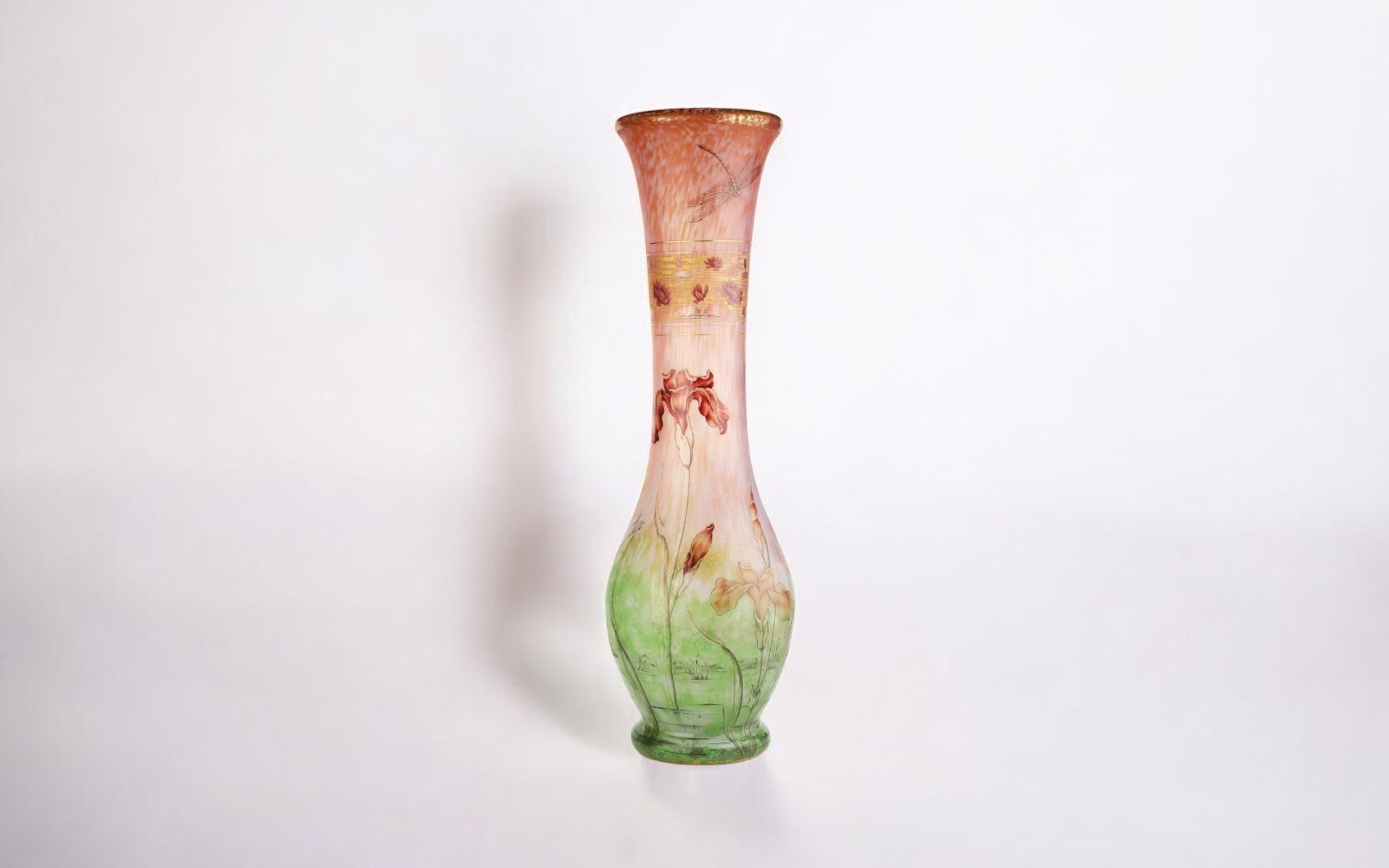
Focus on a Daum vase with iris design
This vase by Daum embodies the finesse and elegance of Art Nouveau, with a touch of plant poetry. The choice of a delicate floral motif, in this case irises, is typical of the naturalist inspiration behind Daum's creations.
This pattern runs smoothly along the vase's slender silhouette, subtly shifting from a soft green background to salmon pink, creating a gradient effect reminiscent of sunrise over a garden in bloom.
The color transitions bear witness to exceptional technical mastery, where each layer of glass seems to melt into the next, giving the whole a dreamlike quality.
Fine engraving and acid staining bring out the delicate details of the petals and stems, while the slender, slightly flared neckline gives the piece a refined, slender look.
A dragonfly delicately engraved on the top of the vase completes this bucolic atmosphere, adding an element of life to this plant scene.
This type of piece demonstrates the Daum brothers' talent for combining technique and artistic inspiration, transforming natural elements into decorative objects of rare beauty.
With this vase, Daum pays homage to nature, sublimating materials and infusing their glass with an almost living breath, capturing light and diffusing it into a soft glow.
Daum crystal works - Ina
The success of Daum crystal: between tradition and innovation
In the early days of the factory, Daum's signature pieces were made of pâte de verre, a technique that, while prized for its textural and color effects, was distinguished by its lead-free chemical composition, offering a less transparent rendering than crystal.
The transition to crystal, which is heavier and brighter thanks to the addition of lead, opens up new perspectives for the home.
This material, regulated in France since 1971, requires a strict composition containing at least 24% lead oxide and a specific refractive index to ensure its brilliant transparency.
While glass and crystal share the same silicon oxide base, their atomic structure differs, requiring distinct cutting techniques adapted to the particularities of each material.
After the Second World War, when raw materials for glass paste became increasingly scarce, the factory, under the management of Henri and Michel Daum, grandsons of Jean Daum, decided to focus its production on crystal.
This transition marked the beginning of a new era, with creations that explored the elegance of materials in collections of flutes, glasses and animal sculptures that would become iconic.
In the years that followed, Antoine Froissart, Jean Daum's great-grandson, perfected the crystal formula to achieve an unrivalled level of transparency, further enhancing the quality and renown of Daum pieces.
From 1968 onwards, Jacques Daum opened the factory to collaborations with contemporary artists such as Salvador Dalí and Césarbringing a bold artistic dimension to his crystal creations.
It was also during this period that Daum innovated by developing pâte de cristal, an innovative material made from groisil, which enabled the glassworks to diversify its collections while solving financial challenges.
Today, Daum perpetuates this heritage by showcasing exceptional works, such as its crystal chess sets, both transparent and colorful, which testify to the alliance between tradition and innovation.
Recognizing the signature on a Daum product
Not all Daum crystal objects are signed. What's more, as several artists have worked and sometimes collaborated for the manufactory, the object may be signed with another name even though it was produced by the Daum glassworks. That's why it's important to have your pieces appraised.
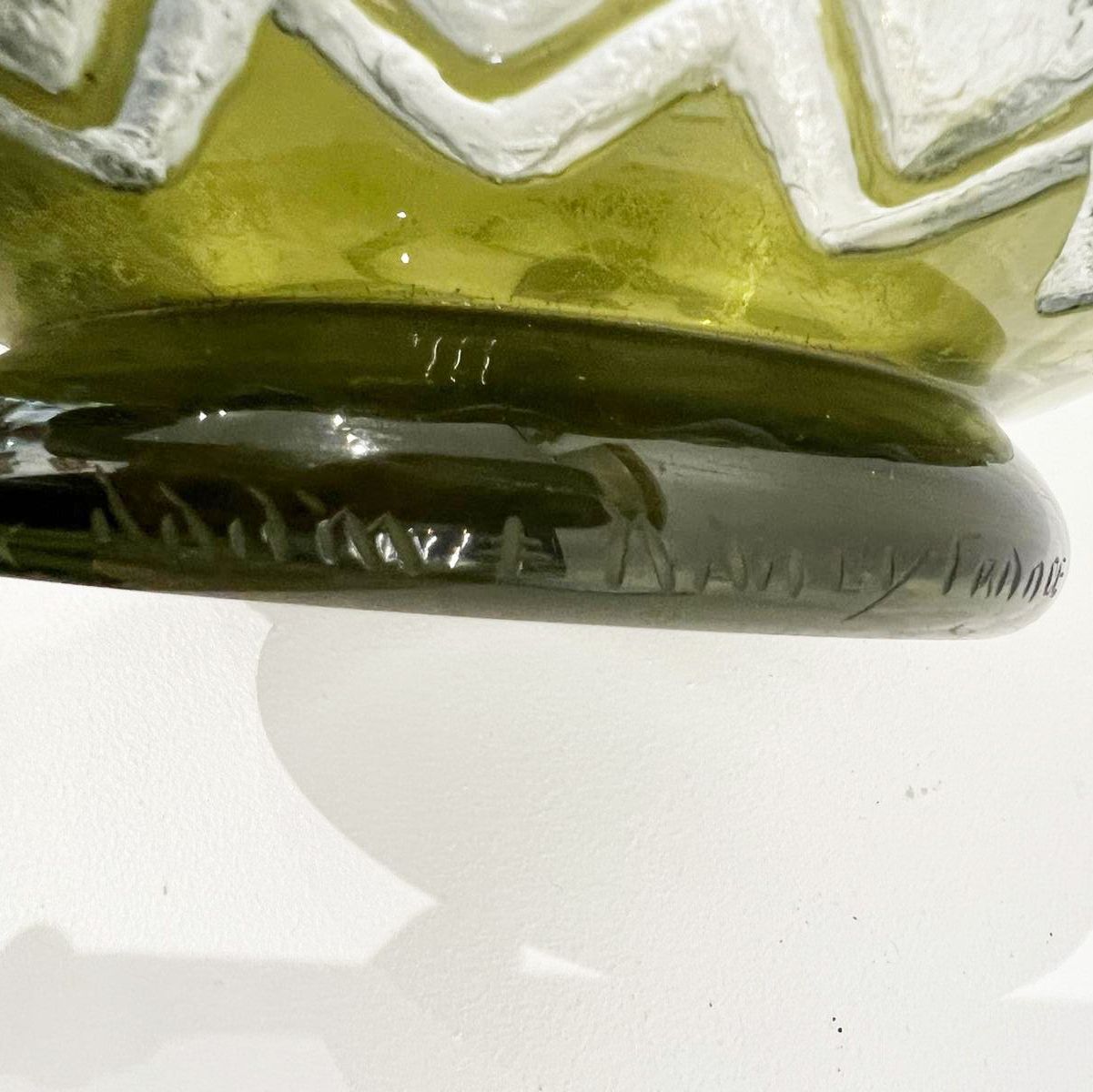
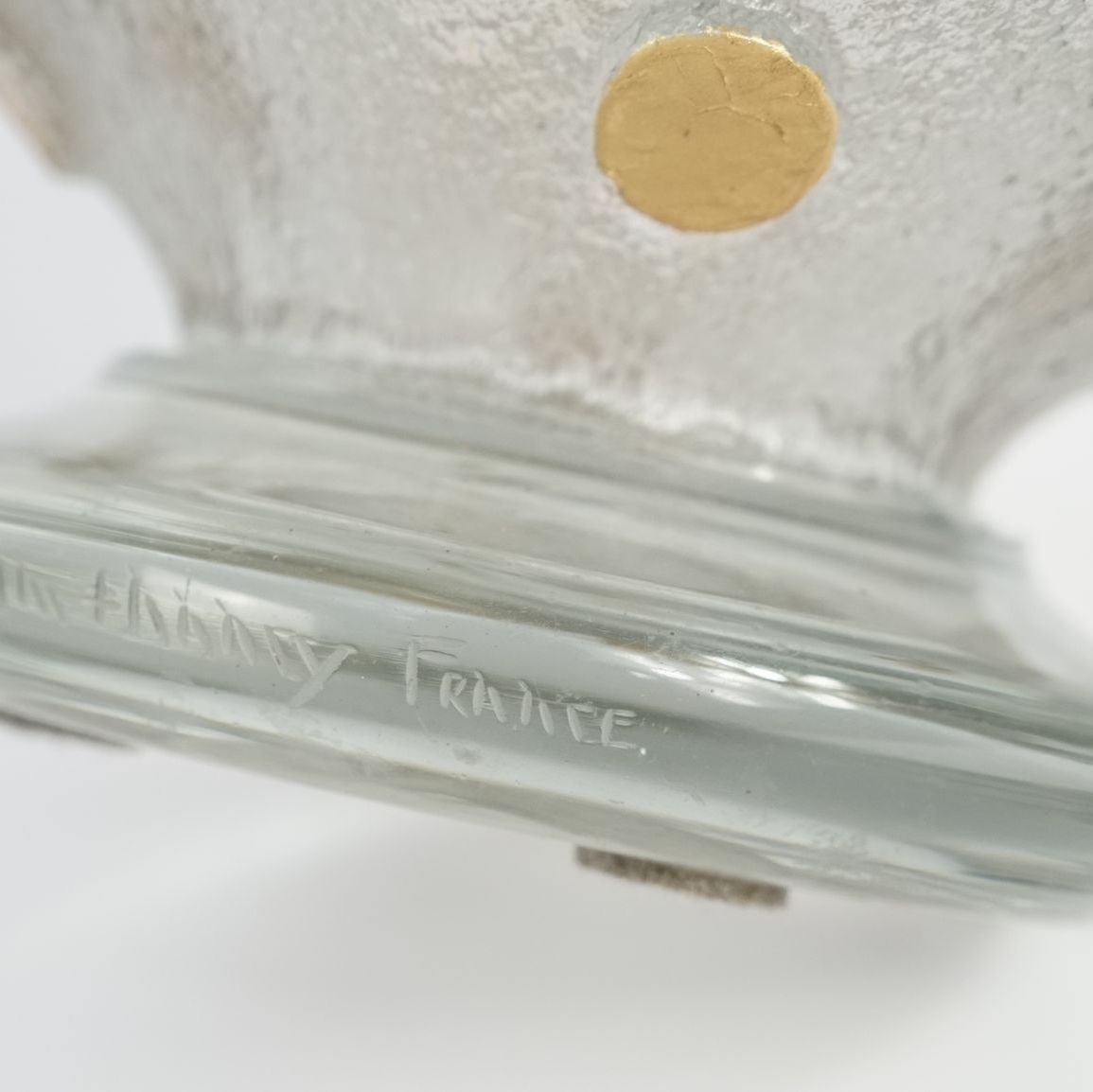
Knowing the value of a work
If you happen to own a piece of Daum crystal or one made by Daum, don't hesitate to request a free appraisal using the form on our website.
A member of our team of experts and certified auctioneers will contact you promptly to provide you with an estimate of the market value of your work, as well as any relevant information about it.
If you're thinking of selling your work of art, our specialists will also be on hand to help you find alternatives for selling it at the best possible price, taking market trends into account.
Response in less than 24h
Related topics
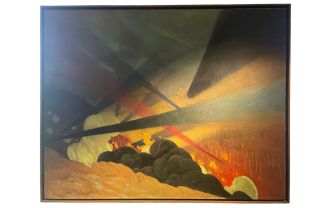
Rating and value of works, drawings, engravings, paintings by...
Félix Vallotton was a Nabi painter of the early 20th century who produced many works. His works are highly valued at auction.
Read more >
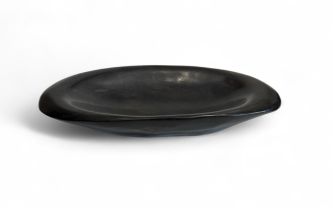
Rating and value of sculptures and furniture by Odile Noll
Odile Noll was an active artist from the 1950s to the 70s, producing works in fine wood. Her works are valued and quoted.
Read more >
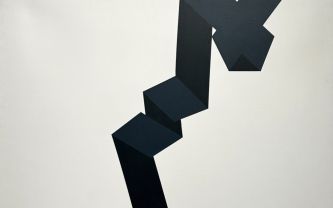
Cote et valeur des tableaux, dessins, peintures de Vera Moln...
Vera Molnar est une artiste pionnière qui a développé l'art numérique, et dont la cote et la valeur sont élevées aux enchères.
Read more >
Secure site, anonymity preserved
State-approved auctioneer and expert
Free, certified estimates
